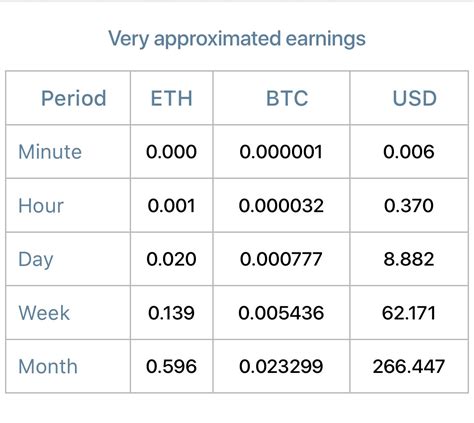Understanding Ethereum Hash Power: Guide to Gigahashes and Megahashes
The world of cryptocurrency mining has become a complex landscape, interchangeable with various expressions and units. In this article, we are immersed in the concept of Ethereum hash power and explores the differences between gigahash (ghash) and megahash (mhash).
What is Hash Force?
Hash performance suggests that an individual is able to make mathematical calculations on a blockchain network and solve complex problems that validate transactions and create new blocks. The more computing the individual has, the faster they can solve these problems, resulting in increased blockage and transaction processing speeds.
Gigahash (Ghash) vs Megahash (Mhash)

One of the most common units for expressing hash force is Ghash, which is 1000 megahash (mhash). This unit was widely recognized for the standard action of cryptocurrency miners. However, there is another unit that is becoming more and more popular: Megatrus.
Megathrust is an alternative unit that measures the HASH ratio of the miner in terms of gigahashes (Ghash). To put this into perspective:
- 1 ghash = 1000 mhash
- 1 GH/S = 10 000 mhash
The term “gigatrust” is often used in the cryptocurrency mining community with Megathrus. However, some experts claim that Gigathrust is not a usual unit and can be more often associated with certain types of mining operations.
Ethereum Hash Force: Gigahashes and Megahashes
So why do you use ghash and mhash to express both hash force? This is due to Ethereum blockchain native hash function. Ethereum 2.0 Testnet uses a combination of both gigahash (ghash) and Megathrust (Mhash) to measure the hash force.
In this context, each miner contributes to their own unique hash power using their own Ghash unit. This allows for more accurate measurement of general hash energy, taking into account the variable levels of calculation resources available in different mining operations.
Why Genesis Mining Acts Hash Power in Terahashhes
Genesis Mining, the popular cryptocurrency mining pool, Terahashhes (Thash) uses it as a default unit to measure Hash performance on the platform. Terahash is equal to 1000 Ghash or Megatrus. This unit has been widely recognized and used within the community.
The reason is that Genesis mining chooses Terahashhes instead of Gigahashes or Megatrust, with its own internal calculation and the infrastructure of the data center. Using terahashes can accurately track and compare Hash energy during various mining operations.
Conclusion
In summary, understanding the Ethereum Hash Energy System is essential for those interested in cryptocurrency mining. At first glance, the difference between Gigahash (Ghash) and Megahash (Mhash) and Gigathrast and Megatrust may be disturbing. However, with the recognition of each unit and Ethereum blockchain, individuals can make more well -founded decisions when choosing a mining pool or calculating their own hash.
Sources:
- Bitcoin magazine
- Coindesk
- Ethereum World
- Cryptoslate


Geef een reactie